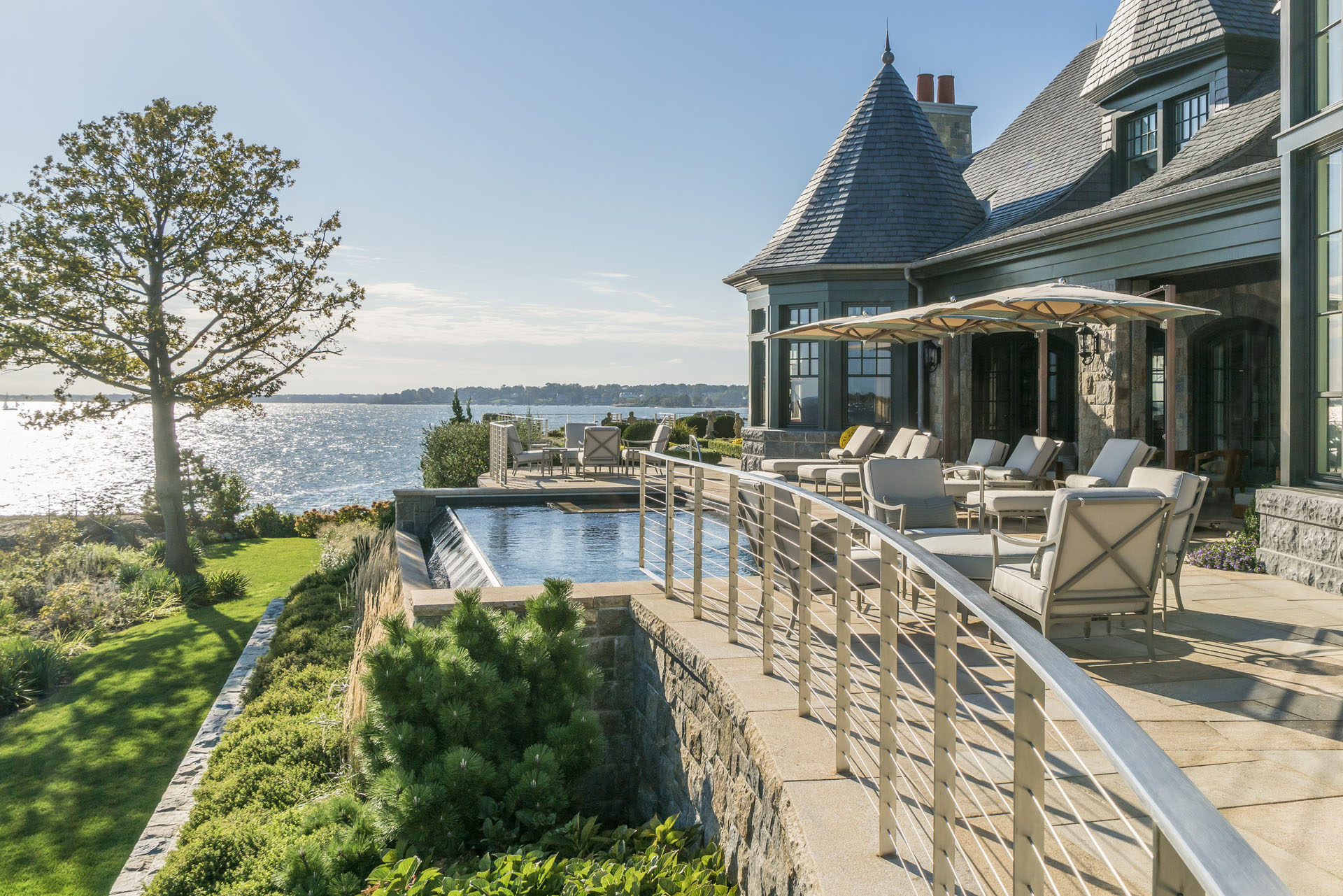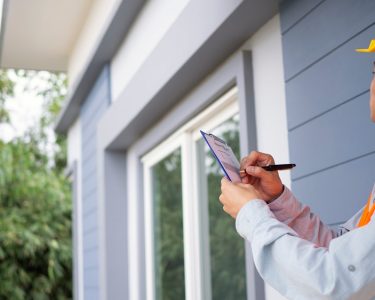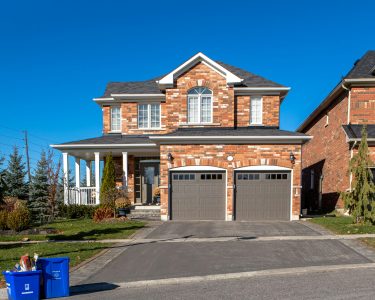Top Tips for Increasing Your Home’s Curb Appeal with Exterior Painting
Exterior painting is an essential aspect of home improvement that can significantly enhance a property’s curb appeal and protect its structure. A successful painting project begins with selecting the right type of paint, taking into account the differences between different types of paints and their respective advantages and disadvantages. Equally important is staying informed about popular color trends and schemes, which can help homeowners make impactful and visually appealing choices that also align with their personal tastes.
Additionally, proper surface preparation is crucial for ensuring a long-lasting and durable paint job, so it’s necessary to understand the steps involved, including cleaning, scraping, sanding, and priming. Weather conditions also play a significant role in the outcome of an exterior painting project, with factors like temperature, humidity, and wind requiring careful consideration. Finally, understanding various application techniques, such as brushing, rolling, and spraying, is key to achieving a professional-looking result that stands the test of time.
Choosing the Right Paint for Your Home’s Exterior
Painting the exterior of your home is a simple yet effective way to give it a comprehensive makeover or a minor refresh. It’s a large task, whether you do it yourself or hire a professional painter. Exterior painting necessitates a major investment of time, resources, and effort. In addition, if you make a mistake, you’ll have to start over or repaint in a year or two. Avoid problems with your outside painting project by first determining the best paint type for you and your home.
Acrylic, latex, and oil-based paint formulas are the three most used. The optimal type for your home is determined by a number of factors, including the local climate and your aesthetic choices. Acrylic paints are often created with high-quality materials that give them a thick and sticky consistency. Chemicals in acrylic paints make it more elastic, allowing it to stretch and compress as temperatures change. Acrylic paint’s flexibility makes it excellent for exterior painting applications. Acrylic exterior paints are ideal for use on wood, aluminum, or fiber cement siding since they are durable and long-lasting. It can also be used to cover stucco, plaster, and drywall.
Consider latex paint as a less expensive choice. Because latex paints are water-based, they are easier to apply and clean up than other exterior paint kinds. Latex paint dries quickly as well. Latex paint, like acrylic paint, expands in warm temperatures and contracts in cold temperatures. On the market, there are both interior and exterior latex paints. Choose exterior paint that is specifically developed for outside use when searching for paint for your external painting project.
Oil-based paints are no longer extensively utilized due to rigorous health regulations. When wet, they create hazardous fumes that might be overwhelming for the person painting. They’re generally safer to use outside, where there’s airflow, than indoors. Wear a protective mask when doing DIY to avoid taking in fumes. However, oil-based paint is still appropriate for some outdoor painting applications. Oil-based paints shrink less than latex and acrylic paints, withstand high traffic, and apply cleanly. Oil-based paint dries to a smooth, firm surface and is ideal for porch floors, doors, trim, and minor details. Oil-based paints, on the other hand, are more likely to break and fade than latex and acrylic paints. It’s also tough to clean because it’s made of oil rather than water.
Trending Colors and Schemes for Your Home’s Exterior in 2023
The exterior appearance of a home is one of the most important elements a homeowner can pay attention to. Curb appeal is important for a home’s value, identity, and community integration, as well as for preserving the type of ‘welcome home’ comfort that makes an individual feel at peace in their own abode. Maintaining a beautiful and meaningful exterior, on the other hand, involves well beyond simply painting your house a color you enjoy. House exterior change, remodeling, and renewal are critical to keeping a property feeling fresh and appealing.
A classic aesthetic with a strong neutral tone, such as beige, can change the exterior of your home into something sharp and intriguing. The most effective applications of this popular exterior house color are those that feature bold, contrasting hues used as visual highlighting. Frame-rich beige siding, for example, with crisp white soffit, gutters, and corner stripes. Another fantastic location that may be used to offset beige siding is the roof.
Green might be a wonderful choice for your 2023 exterior remodeling project if you enjoy the look of earthy tones and natural aesthetics. Gray Heron, which is quite fashionable this year, looks great when paired with dark gray and milk colors. Unlike beige, pure white isn’t the greatest color to combine with this one-of-a-kind tint, so look for more muted alternatives. Commit to bright yellow outlined with sharp white windowpanes for a more ‘main street’ effect. This color scheme creates a youthful atmosphere that many people find appealing and pleasant. Versatile hues of gray or brown work nicely as roofing colors to complement the bright yellow exterior.
Smoky red, like some of the other hues with high visual impact, works best when paired with crisp white detailing along windowpanes, corner panels, eaves, and porch railing. When you choose the correct tone to compliment the smoky red paneling, the outcome is stunning and leaves an impression on spectators. Bright clay colored siding is another excellent alternative for exterior renovations this year. Red Rock Falls turns from a vibrant, playful color to a more mature, elegant palette when paired with warmer brown colors. The trick to using this color well is to create the perfect balance. Use this color in conjunction with warmer tones to soften it.
Proper Surface Preparation for Painting Your Home’s Exterior
The key to a good paint job is that the majority of the hard labor is completed before a brush ever touches the building. Painting on an improperly prepared surface will only lead to disappointment, but professional pre-paint work pays enormous benefits.
Exterior paint preparation can be a demanding undertaking. Depending on the scope of the project and your degree of experience, you may not even know where to begin. The best way to begin, like anything else, is with a good plan. Determine whether components of the project can be divided into pieces and which must be completed all at once. Look for troublesome regions so that you can approach them with your eyes open. The design period is also the optimum time to think about lead paint testing. It’s usually a good idea to know what you’re going into if you own a house built before 1979. This is critical since you will most likely need to sand or scrape your existing outside paint during the course of your project.
Surface prep accounts for the vast majority of exterior paint prep labor. Also, avoid making these mistakes. Sanding and scraping are the most difficult parts of the preparation. If you’re working on an unpainted surface, you can do a brief prep and then proceed. However, most previously painted surfaces will require scraping off loose and flaking paint and sanding the edges smooth. This is a time-consuming and exhausting process, but it is crucial to the overall outcome. Painting over flaking paint will simply result in new flaking paint, and bypassing the sanding procedure will result in massive, ugly “divot” areas on your property. Power sanders can assist speed up the task, but practice proper breathing and dust control techniques.
Planning For Optimal Painting Conditions
A quality painting job requires determining the ideal temperature to paint outside. When, though, is it too hot or too cold to paint outside? And what is the best temperature for painting the outside of my house? These are just a handful of the many house painting questions that homeowners have throughout the fall and summer. There are a few crucial principles to follow whether you’re planning a DIY job or hire a professional painter to complete your outside painting.
As a general rule, the best temperature for outdoor painting is 40 to 90 degrees Fahrenheit, with an ideal painting temperature range of 50 to 70 degrees Fahrenheit. This translates to a great temperature range of 4 to 32 degrees Celsius and excellent temperatures of 10 to 21 degrees Celsius for painting exteriors.
You should choose days when the weather does not fall into either extreme of this range. Extreme temperatures might shorten the life of your paint job. Paint, in particular, requires suitable temperatures to dry and cure correctly. The appropriate paint temperature can also be found on the label of most exterior paint cans, which is often neglected. Indeed, the suggested temperature ranges for each product are frequently found on the side of the can.
Best Exterior Paint Application Techniques
Some painting businesses deliberately promote the fact that they hand-roll the exterior of your home rather than using sprayers. This statement, at least, works well as a sales pitch: after all, how could it not be better to do something by hand rather than by machine? But, as with most things, there’s more to it than that. Here are some things to think about when deciding whether to spray or roll the exterior of your home.
The main reason why so many painting companies utilize paint sprayers is because they are speedier. Going quicker requires fewer man-hours, which results in a lower cost to the consumer. This is true even though spraying necessitates extra preparation and material to mask off areas and avoid overspray onto windows, doors, and concrete, among other things. But getting the task done quickly isn’t only about saving money. Going rapidly results in a more homogeneous and appealing final product. The slower you go, the more probable you may see lines and marks from where one area dried before applying the next.
The suggestion for how frequently your house should be repainted remains unchanged whether it is sprayed or rolled. In any case, the paint will only protect your home for a limited time. Spraying may actually outlast rollers in certain ways, as a well utilized paint sprayer can coat surfaces in cracks far more effectively than a roller.
Professional painters use a technique known as backrolling to ensure that paint is pressed into deeper surfaces, particularly those that have been slightly damaged by the weather. It works by spraying a coat of paint and then quickly rolling it over the surface to ensure that the paint is rubbed into every angle of the surface. Even if backrolling is not used, it is extremely rare to find a house that does not require the use of a brush or roller for trim. When you don’t use a sprayer when you can, you have less time to spend on detail work, which already takes a significant amount of time.





